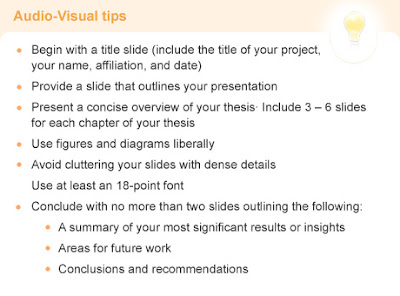THESIS OUTLINE (revised 3/02/08)”How to Run Off a Cliff With Style : Animating Emotion in Characters” by Randolf Dimalanta- - - - - - - - - - - - - - -
ABSTRACT:1) Open with Frank Thomas and Ollied Johnston quotation, “Emotion…it is one of animation’s greatest strengths and certainly one of the most important aspects of this art for the young animator to study and master.
2) Introduce the reader to the importance of emotion in character animation.
3) Begin to define the project, what I intend to explore and how the presentation is broken up.
- - - - - - - - - - - - - - -
ACKNOWLEDGEMENTSA project like this is never completed alone, and so this section is a thank you to the following people: Dori-Little Heck, Patricio Fernandez, Thomas Joule, Ron Wade, Carol Parenteau, Jacob Kaltenbach, Meryl Blau, Doug Glen, Rocky Bright, Brian Tinker, Christina Labrise, Gretchen Thomas, Lee Lanier, Ed Hooks, all my students who have been the guinea pigs for this experiment, and my family Angela, Aisa, Iman and Mayumi.
- - - - - - - - - - - - - - -
INTRODUCTION1) State the importance of animating emotion in characters and how character drives story. Show examples of these.
2) Explain how story drives the animation industry through interesting characters.
3) Explain how learning these skills happens too late in the animation student’s training and that it should happen sooner.
4) State the purpose of this project, which is to develop an animation curriculum that teaches the intermediate animation student how to animate emotion.
- - - - - - - - - - - - - - -
OVERVIEW of the INQUIRY1) Explain the order of the presentation which will begin by defining “emotion”, followed by an overview of the “12 Principles of Animation” and its importance to the animation industry, explain the current state of emotion animation and finally, mention the curriculum for the intermediate animation student, which is taught through a series of exercises, that covers pre-planning tips, advice from professionals, stage acting techniques, video tutorials and which is then followed by class discussion questions.
- - - - - - - - - - - - - - -
STATEMENT OF INTENTHere I list the reasons why I am choosing to explore this inquiry, and how the inquiry is broken up.
Reasons:1) Learning emotion animation rarely occurs at the intermediate level. By providing this curriculum, it exposes industry standard methods for animating emotion in CG characters, which results in better prepared students for entry into the field.
2) It is part of my value system to give back to the community, though teaching and by developing a website where anyone can access the information to better their skills.
3) It helps generate samples for my professional portfolio.
For clarity of presentation, the project will be divided into 5 parts.
PART I: “What is Emotion”Define emotion and what it means in animation characters. Review influence of the Golden Age of Disney and Warner Bros. and their impact in the field. List 3 examples.
PART II: “Acting for Animators”Focuses on the mechanics of movement and acting principles as it relates to the animation student. Items to be covered in this section include gesture, various acting techniques, and laban motion analysis. Mention “Acting for Animators” text by Ed Hooks.
PART III: “Importance of Pre-Planning”Covers the importance of pre-planning for the animator. Subjects covered in this section include: Knowing the character, understanding the scene in relation to the story, posing, shooting and using video reference.
PART IV : “The Animation Workshop”Begin by explaining the purpose of the curriculum and the importance of feedback and constant practice.
This section is the “ 11 Week Animation Workshop”. Each exercise will include an assignment description, objectives, animated examples, background information and a process for how to begin. The lesson will end with tips and tricks from professionals, discussion questions, links to resources for further study and video tutorials for select exercises.
The animation exercises / assignments are:1) 2 Bouncing Balls Animation
2) Drink Box Animation
3) Pose Sketching for Emotion (This is drawn by hand).
4) Create CG Poses that Convey an Emotion. (Same as above, but is now done on the computer).
5) Gear Change I (Animate a character experiencing two emotions).
6) Gear Change II (Animate a character experiencing 4 emotions) (2 weeks).
7) Animate a character pushing and pulling a heavy weight (2 weeks).
8) Character Monologue (2 weeks).
BONUS Assignment
Animate a character dialogue (2 characters)
PART VThis refers to the website component of the presentation. Prior to completion, this thesis project will be available for view online by anyone interested, specifically intermediate animation students, animation websites, and professional animators in the industry. Animation instructors can refer to the site as a resource for their classroom.
= = = = = = = = = = = = =
GUIDING RESEARCH QUESTIONS (Not included here, but was included with the thesis pitch):1) How is emotion defined in animation and why is it important?
2) To what capacity is emotion animation taught in animation schools?
3) What has been said by working professionals about emotion?
4) What tips and tricks do animators have to share about emotion animation?
5) How can emotion be achieved in a character?
6) What are effective animation techniques?
7) What are some acting techniques that an animator can use?
8) How can this help the animation industry?
9) How can this be marketed?
= = = = = = = = = =
CONCLUSION:Comments on further study
Laban Motion Analysis
Ed Hooks: Acting for Animators Workshop
Getting feedback regarding your work (I’m currently reviewing resources that could help with this).
= = = = = = = = = =
OUTLINE & THESIS CHAPTERS:= = = = = = = = = =
REFERENCES:







